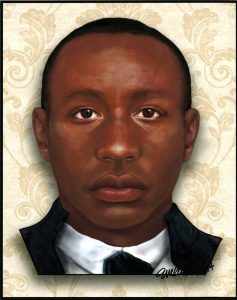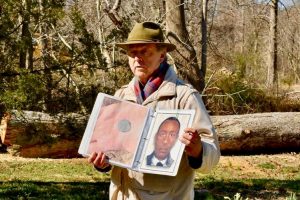
What the Storm Unearthed at Serenity Farm
Timeframe: 1778 – 1810
Abraham and Moses, two enslaved men decided to escape their plantation in July of 1778. The plantation is now known as Serenity Farm in Charles County, Maryland.
In 1778, Serenity Farm was but one portion of a 600-acre property owned by Charles Somerset Smith and later inherited by his son Henry Arundel Smith in 1781. Under their ownership from the 1700s to circa 1809, the plantation was farmed by fifty-seven enslaved persons. Two of these enslaved were Abraham and Moses.
Abraham and Moses unfortunately failed in their efforts to escape bondage and achieve freedom. The two were recaptured and returned to the plantation. Plantation records show that both men died young. Abraham lived to be 30 years old. Moses died at the age of 40. Both men were buried on the plantation.
In 1982, then-owner of the site, Frank Robinson Sr. found a human skull on the farm and kept it in his possession. Years later in 2012, a storm impacted Serenity Farm causing damage to the site. In the aftermath of the storm, signs of human remains were revealed to archaeologists who were looking for evidence of a War of 1812 British encampment.
Forensic research was conducted on the skull Robinson found in the 1982 and it was determined to be from an African American male. This fueled more interest in what could lie beneath Serenity Farm and in time, archaeologists unearthed a slave burial site on the property. The remains of twenty-three men, women, and children were founded and dated, by the researchers, from between 1790 and 1810. Afterwards, their remains were reburied at Serenity Farm.

Now there is a stone marker to highlight their burial site. Some of these remains could be those of Abraham and Moses.
Additional Resources
MaxwellHallInterpretivePlan.pdf (maxwell-hall.s3.amazonaws.com)